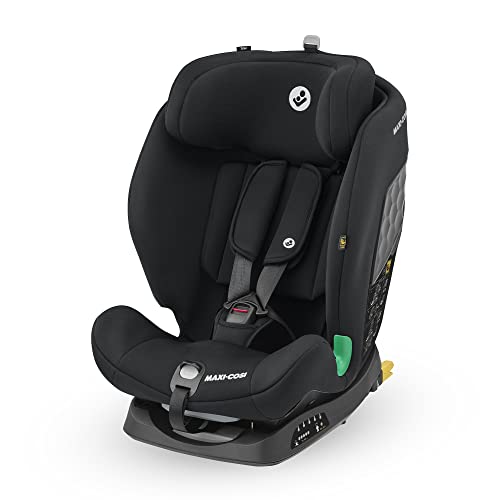You'll Never Be Able To Figure Out This Infant Car Seat Uk's Secrets
페이지 정보
작성자 Donte 작성일 25-02-07 16:37 조회 330 댓글 0본문
Choosing an Infant Car Seat in the UK
In the UK the UK, all children are required to use a child's seat until they reach certain heights or ages. Choosing the right car seat is crucial to ensure your child's safety.
 This rearward-facing car seat is called one of the best by consumer champion Which? It comes with a soft baby-hugg insert and a heightened G-Cell side impact protection. It comes with a rotating feature that lets you to adjust the seat to the ideal position for your vehicle.
This rearward-facing car seat is called one of the best by consumer champion Which? It comes with a soft baby-hugg insert and a heightened G-Cell side impact protection. It comes with a rotating feature that lets you to adjust the seat to the ideal position for your vehicle.
Rear-facing
Car seats that are rear-facing for infants are designed to shield infants from neck and head injuries during the event of a crash. Children who are seated forward-facing in car seats are seven-times more likely to suffer serious injuries than those who ride rear-facing. Car seats that face the rear for infants are usually placed on the back seat and are smaller and less heavy. It is recommended that you always use a rear-facing infant car seat until your child has outgrown it or attains the weight or height limits for forward-facing use.
There are two kinds of rear-facing infant car seats convertible car seats and all-in-one car seats. Both are safe, however they each have their own advantages and drawbacks. Convertible car seats start out rear-facing and can be turned to face forward once your child is big enough. All-in-one car seats feature higher rearward-facing weight and size limits to ensure that your child is able to safely ride for longer in the seat.
Make sure that the rear-facing car seats you choose for your child are compatible with your vehicle and are properly installed. Examine the labels of the manufacturer and the owner's manual for your vehicle for instructions on how to properly install the seat. Test the straps on the seat to ensure they are secure and tight. Also, make sure that your child cannot pinch the harness material. Also, make sure to stay clear of wearing bulky clothes that could impede the straps.
Rear-facing car seats are less dangerous than forward-facing car seats designed for infants, as the impact force is lessened when the infant's body is held in the seat. Additionally, rear-facing car seats offer greater security for infants ejected from a vehicle in an accident that causes a side impact.
If your child outgrows their rear-facing infant car seat, you might consider changing to a seat that has a large rearward-facing weight and a size limit. A majority of convertible car seats have rear-facing limits that let your child sit in the seat for a period of more than two years.
Forward-facing
If your baby is no longer in the rear-facing Infant car seat uk car seat you can turn them around to face forward. It is best to wait until your child reaches the weight and height limits before you do this. It's also a good infant car seats idea to speak to your pediatrician about this.
According to the laws of physics, and safety research, children less than two are safer in a rear-facing car seat. They are able to rest more comfortably in their seats and are less likely than others to be injured by a belt or an airbag. This is particularly important for babies, who's necks and bones are still developing. The i-Size guidelines suggest that all infants and toddlers sit rear-facing until at least 20 pounds or 12 months old, and some experts recommend waiting even longer.
If your child grows out of the rear-facing car seat it is possible to switch them to an automobile seat that is convertible or comes with five-point safety harness. These seats are designed to accommodate your growing child and many have a removable infant positioner. These seats include a base to allow them to be used on different vehicles. You can also purchase additional bases if your vehicle has more than one.
For children weighing up to 20 pounds, it's recommended that a car seat be fitted with a headrest. The headrest should be angled slightly back but not more than 300 degrees vertical. It should also cover the baby's ear. The baby's airway could be blocked in the event that the headrest isn't tilted back sufficiently. The car seat should not be set in a way that could cause a herniated disc in the spine.
In a crash, a young child can fall out of a rear-facing car seat, and this could be fatal. You can put a rolled up towel or pillow under the base of the car seat to aid in reclining it. This will make your child more comfortable in the vehicle.
In addition to protecting children from falling out of their seats There is evidence that a rear-facing car seat may minimize leg injuries during crashes. In a frontal crash the legs of a forward-facing infant can be swept upwards and strike the back of the seat, which could cause serious injuries. However, in a rear-facing car seat, the child's legs won't hit the seat and can be cushioned by the harness. This will reduce the risk of injuries.
Multi-group
There are many alternatives for top rated infant car seats car seats, but not all of them will meet the needs of your baby. A multi-group infant seat will be suitable for your child from birth until about age 4, and is compatible with the majority of prams. This type of car seat has a harness that is designed to protect your child. It is designed to grow with it, with features such as an adjustable headrest or side impact wings. Some of these seats are also designed to be able to rotate inside the vehicle and allow you to change their position to give your child an enhanced view of the road ahead.
New infant car seats are designed to be based on height, not weight, making them safer for your child. This type of car seat, known as i-Size or R129 is EU-approved in the UK and all of them have to be in compliance with strict safety requirements before they can be sold. The label will have a capital "E" in the form of a circle, and the letters "R129". These seats are simpler to put in and offer greater protection against side-impacts.
The Group 0+ or 1 car seat will face rearwards until your child weighs at minimum 9kg. After that they can be turned around to face forward. They are fitted with a harness and are secured using either Isofix or the car seat belt. Some will have an option for rotation, which means that you can move the car seat around without using the car belt, and some of them will also fit on the majority of prams.
A group 1/2/3 seat will be used until your child reach the age of 11 and are 105cm tall or until you decide to transform it into a booster. Which is the best car seat? as the safest. These car seats feature a wide design with a one-handed recline setting and at least 12 headrest positions. Some of them are also built for travel, with a light carry handle designed to fit easily in a suitcase.
Rotation function
One of the most important characteristics of infant car seats best car seats is the ability to rotate. It allows the portion of the seat which holds the baby to spin on a separate base, making it easier for parents to move the child into and out of the car. This feature is particularly useful when the vehicle's trunk or backseat is small. It can also make it easier to install a seat into another vehicle.
It's also much easier to reach the buckles of the harness without disturbing a sleeping baby. This is a blessing for parents who are juggling toddlers and trying to get them in the car. Some seats that rotate aren't capable of achieving this. It is worth reading online reviews about specific models to find out how well they perform.
A seat that can be used with strollers is another feature that's important. This is referred to as a travel system, and is ideal for parents who are looking for a single product to take them through the various stages of their child's growth. It's also an excellent choice for families with a multi-car household because it gives them the option to switch cars quickly without disturbing the child.
Infant car seats are designed for infants and babies that are less than one year. They are classified into four groups which are Group 0, 1 3, and 4. The Group 0 car seat, also referred to carrycots or infant seats, keeps the child facing rearward and is connected to the vehicle with a standard seatbelt or ISOFIX fitting. The Group 1 infant car seats generally connect to the base of the vehicle by using LATCH, which is a simple system for connecting most types of car seats.
A convertible car seat, also known as group 3, is one that grows with your child from birth until around four years old. These seats come with an increased weight and height limit as well as a padded adjustable headrest that will protect the child from an accident. They also have an adjustable wedge for support and a deluxe carry handle, which means they can double as a carry-on.
In the UK the UK, all children are required to use a child's seat until they reach certain heights or ages. Choosing the right car seat is crucial to ensure your child's safety.
 This rearward-facing car seat is called one of the best by consumer champion Which? It comes with a soft baby-hugg insert and a heightened G-Cell side impact protection. It comes with a rotating feature that lets you to adjust the seat to the ideal position for your vehicle.
This rearward-facing car seat is called one of the best by consumer champion Which? It comes with a soft baby-hugg insert and a heightened G-Cell side impact protection. It comes with a rotating feature that lets you to adjust the seat to the ideal position for your vehicle.Rear-facing
Car seats that are rear-facing for infants are designed to shield infants from neck and head injuries during the event of a crash. Children who are seated forward-facing in car seats are seven-times more likely to suffer serious injuries than those who ride rear-facing. Car seats that face the rear for infants are usually placed on the back seat and are smaller and less heavy. It is recommended that you always use a rear-facing infant car seat until your child has outgrown it or attains the weight or height limits for forward-facing use.
There are two kinds of rear-facing infant car seats convertible car seats and all-in-one car seats. Both are safe, however they each have their own advantages and drawbacks. Convertible car seats start out rear-facing and can be turned to face forward once your child is big enough. All-in-one car seats feature higher rearward-facing weight and size limits to ensure that your child is able to safely ride for longer in the seat.
Make sure that the rear-facing car seats you choose for your child are compatible with your vehicle and are properly installed. Examine the labels of the manufacturer and the owner's manual for your vehicle for instructions on how to properly install the seat. Test the straps on the seat to ensure they are secure and tight. Also, make sure that your child cannot pinch the harness material. Also, make sure to stay clear of wearing bulky clothes that could impede the straps.
Rear-facing car seats are less dangerous than forward-facing car seats designed for infants, as the impact force is lessened when the infant's body is held in the seat. Additionally, rear-facing car seats offer greater security for infants ejected from a vehicle in an accident that causes a side impact.
If your child outgrows their rear-facing infant car seat, you might consider changing to a seat that has a large rearward-facing weight and a size limit. A majority of convertible car seats have rear-facing limits that let your child sit in the seat for a period of more than two years.
Forward-facing
If your baby is no longer in the rear-facing Infant car seat uk car seat you can turn them around to face forward. It is best to wait until your child reaches the weight and height limits before you do this. It's also a good infant car seats idea to speak to your pediatrician about this.
According to the laws of physics, and safety research, children less than two are safer in a rear-facing car seat. They are able to rest more comfortably in their seats and are less likely than others to be injured by a belt or an airbag. This is particularly important for babies, who's necks and bones are still developing. The i-Size guidelines suggest that all infants and toddlers sit rear-facing until at least 20 pounds or 12 months old, and some experts recommend waiting even longer.
If your child grows out of the rear-facing car seat it is possible to switch them to an automobile seat that is convertible or comes with five-point safety harness. These seats are designed to accommodate your growing child and many have a removable infant positioner. These seats include a base to allow them to be used on different vehicles. You can also purchase additional bases if your vehicle has more than one.
For children weighing up to 20 pounds, it's recommended that a car seat be fitted with a headrest. The headrest should be angled slightly back but not more than 300 degrees vertical. It should also cover the baby's ear. The baby's airway could be blocked in the event that the headrest isn't tilted back sufficiently. The car seat should not be set in a way that could cause a herniated disc in the spine.
In a crash, a young child can fall out of a rear-facing car seat, and this could be fatal. You can put a rolled up towel or pillow under the base of the car seat to aid in reclining it. This will make your child more comfortable in the vehicle.
In addition to protecting children from falling out of their seats There is evidence that a rear-facing car seat may minimize leg injuries during crashes. In a frontal crash the legs of a forward-facing infant can be swept upwards and strike the back of the seat, which could cause serious injuries. However, in a rear-facing car seat, the child's legs won't hit the seat and can be cushioned by the harness. This will reduce the risk of injuries.
Multi-group
There are many alternatives for top rated infant car seats car seats, but not all of them will meet the needs of your baby. A multi-group infant seat will be suitable for your child from birth until about age 4, and is compatible with the majority of prams. This type of car seat has a harness that is designed to protect your child. It is designed to grow with it, with features such as an adjustable headrest or side impact wings. Some of these seats are also designed to be able to rotate inside the vehicle and allow you to change their position to give your child an enhanced view of the road ahead.
New infant car seats are designed to be based on height, not weight, making them safer for your child. This type of car seat, known as i-Size or R129 is EU-approved in the UK and all of them have to be in compliance with strict safety requirements before they can be sold. The label will have a capital "E" in the form of a circle, and the letters "R129". These seats are simpler to put in and offer greater protection against side-impacts.
The Group 0+ or 1 car seat will face rearwards until your child weighs at minimum 9kg. After that they can be turned around to face forward. They are fitted with a harness and are secured using either Isofix or the car seat belt. Some will have an option for rotation, which means that you can move the car seat around without using the car belt, and some of them will also fit on the majority of prams.
A group 1/2/3 seat will be used until your child reach the age of 11 and are 105cm tall or until you decide to transform it into a booster. Which is the best car seat? as the safest. These car seats feature a wide design with a one-handed recline setting and at least 12 headrest positions. Some of them are also built for travel, with a light carry handle designed to fit easily in a suitcase.
Rotation function
One of the most important characteristics of infant car seats best car seats is the ability to rotate. It allows the portion of the seat which holds the baby to spin on a separate base, making it easier for parents to move the child into and out of the car. This feature is particularly useful when the vehicle's trunk or backseat is small. It can also make it easier to install a seat into another vehicle.
It's also much easier to reach the buckles of the harness without disturbing a sleeping baby. This is a blessing for parents who are juggling toddlers and trying to get them in the car. Some seats that rotate aren't capable of achieving this. It is worth reading online reviews about specific models to find out how well they perform.
A seat that can be used with strollers is another feature that's important. This is referred to as a travel system, and is ideal for parents who are looking for a single product to take them through the various stages of their child's growth. It's also an excellent choice for families with a multi-car household because it gives them the option to switch cars quickly without disturbing the child.
Infant car seats are designed for infants and babies that are less than one year. They are classified into four groups which are Group 0, 1 3, and 4. The Group 0 car seat, also referred to carrycots or infant seats, keeps the child facing rearward and is connected to the vehicle with a standard seatbelt or ISOFIX fitting. The Group 1 infant car seats generally connect to the base of the vehicle by using LATCH, which is a simple system for connecting most types of car seats.
A convertible car seat, also known as group 3, is one that grows with your child from birth until around four years old. These seats come with an increased weight and height limit as well as a padded adjustable headrest that will protect the child from an accident. They also have an adjustable wedge for support and a deluxe carry handle, which means they can double as a carry-on.










